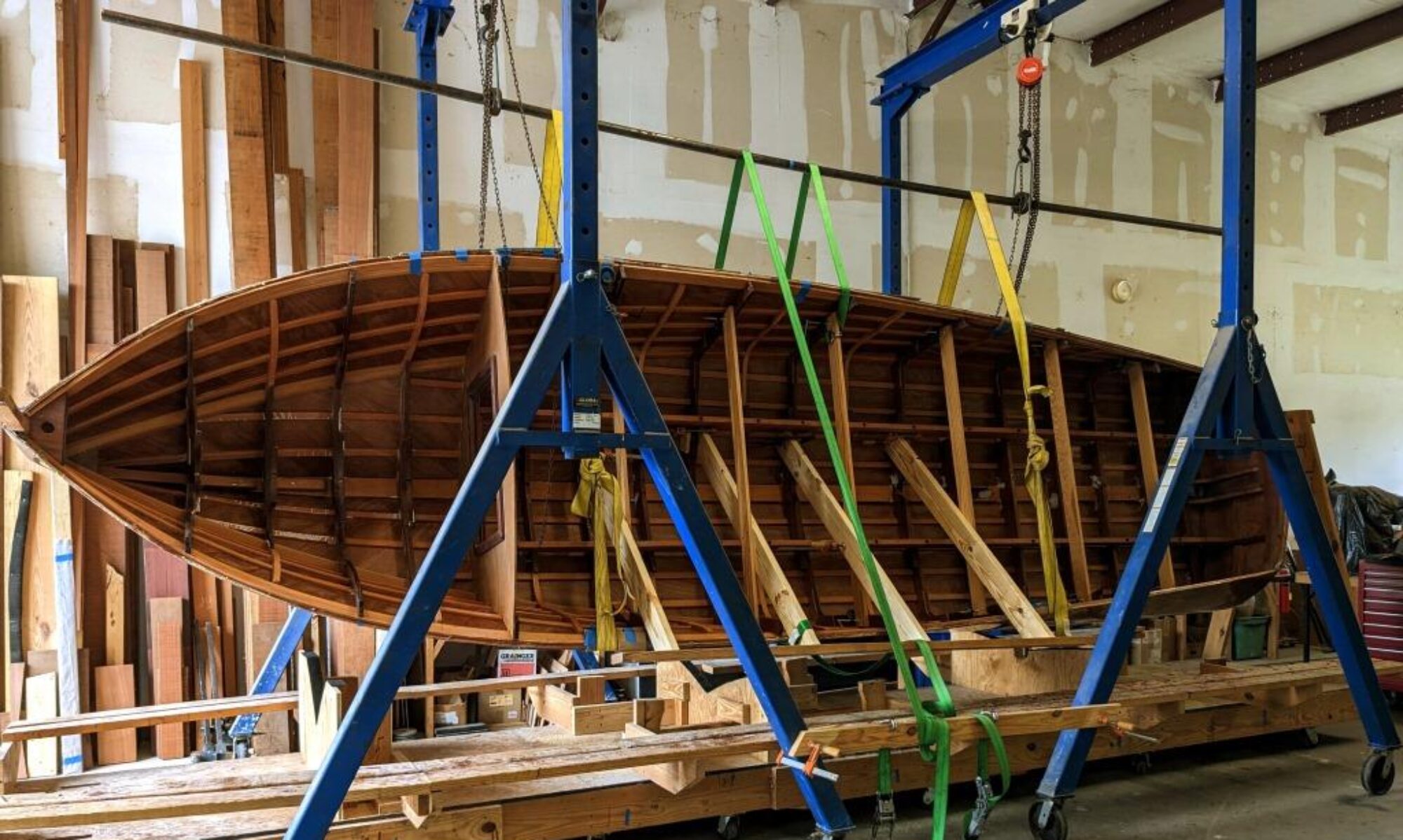
It will soon be time to start steam bending some of the parts we’ve been fabricating over the past few weeks. See The Board Stretcher a.k.a. The Scarf Joint. The keel will need to be bent to the curve of the bottom. At least the forward part of it will be. The aft 8 feet is supposed to be “straight as a string”. Also, the inner chines will be bent into their chine landings on the frames of the boat. And the lower transom bow will be bent to an 8 ft. radius curve per the original design drawings. To get ready for this, I needed to build some very specific equipment.
The steam generator pictured at the beginning of this post is a nice design I got from Don Danenberg’s excellent book, The Complete Wooden Runabout Restoration Guide. The main tube is a piece of 2 inch black iron pipe fitted with a heating element for a commercial water heater in the bottom end. Note the electric cord running to the bottom of this unit. Off the main tube, there’s a secondary tube, to which a sight glass is plumbed. The sight glass let’s you monitor the water level so the heating element doesn’t run dry. Water is supplied through a garden hose to the bottom, and regulated by a gate valve to maintain a constant water level. This is easier to do than it might sound as the secondary tube calms the water level fluctuation caused by boiling at the heating element. Steam is delivered through a piece of automotive heater hose attached to a nipple at the top of the primary tube.
Needless to say, you don’t want this unit to hold pressure. And you want to make very sure you have it properly grounded. It gets hot– 207 degrees by my measurement at the external of the primary tube near the heating element. Hot steam, water and electricity can be a bad mix if not managed well. I always keep a close eye on this piece whenever I’m using it.
Steam bending wood allows the wood grain to follow the curve of the finished piece, making for a much stronger part than if you were to simply cut a curved piece out of a straight board, thereby cutting across the grain at the ends of the curve. Also, it’s much more economical. Most lumber comes in straight pieces. You waste much less by bending a straight piece to the curve you want.
When we steam bend wood, we use the heat of steam to soften the cell walls and the lignin in the wood structure (the natural glue that holds the wood cells together). According to Webster’s dictionary, lignin actually makes up one-third to one-fourth the weight of wood, and after cellulose, it is the most abundant organic compound on earth.
Once the wood cools, the lignin re-solidifies and the wood retains the curve without wanting to spring back to its original shape. The water in the steam does not add water to the wood. It’s just a way of transferring heat to the wood. The rule of thumb is to cook the wood 1 hour for each inch of thickness. Then take it out and see if it feels rubbery like it will bend in to the shape you want it to. If not, put it back in and cook it some more.

We’ll need a box for soaking wood before bending, which can double as a steam box. So, I put together a box out of 2x lumber that is 18′ 1″ long, 9-1/2″ wide, and 13″ deep. This should accommodate all the pieces for this boat and future projects as well. The box is lined with 6 mil plastic from the local hardware store, which can be removed when it’s used as a steam box.


Thanks Pete. Good to hear from you!